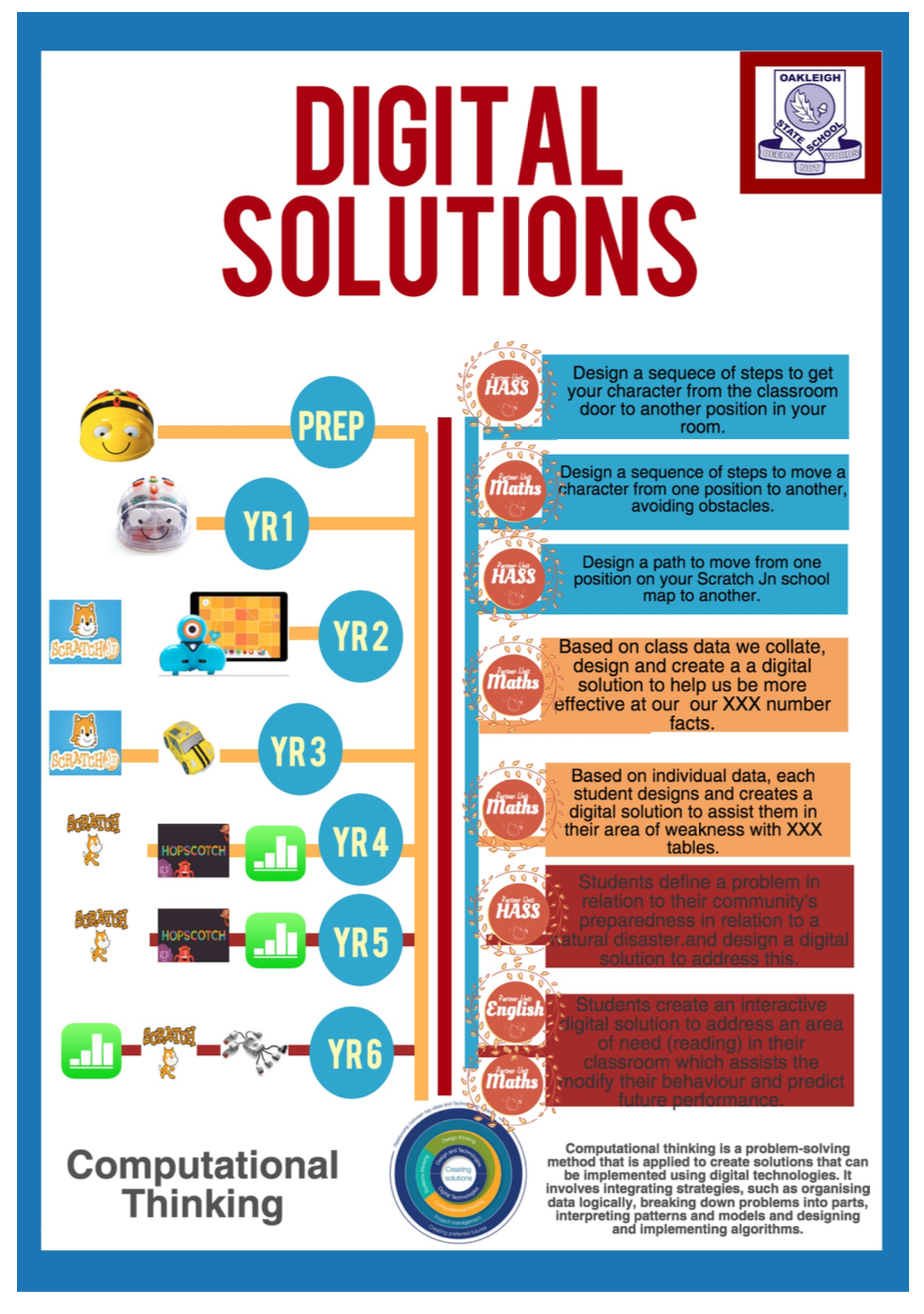The Digital Technologies Curriculum is a key area for us as a school to support us to enact our school vision. This vision, created 2 years ago as a result of collaborative design and inquiry is a driver in decision making as we look to work together to prepare our young learners for the future they face.

As a staff we have just completed a phase of learning and planning which has enabled us to connect deeply with this curriculum, to explore its intent in greater depth than we already have and to work together to create exciting and meaningful learning which has a local context for our students. Importantly, for our teachers in Yrs 3-6, we focussed on the process at the heart of this curriculum – the process which scaffolds the design of a digital solution. We also explored the need for an authentic context – and often this meant we looked to another curriculum area in order to do this.

Our units are currently having the final touches to them in the publishing stage. We are thrilled with the way they reflect our belief that context and alignment with another curriculum area is essential. Of course, this is should not be termed INTEGRATION in which the individual curriculum areas become blurry and the integrity of each learning area may be lost. Rather, we have sought to identify areas of alignment and in finding this alignment, achieved a meaningful context for our digital solution.
Year 3: A Number Fact Solution (supporting analysis of an area of weakness for a whole group in Mathematics and the design of a digital solution)
Year 4: Personalising Number Fact Achievement (supporting individual data analysis of an area of weakness in Mathematics and then the design and creation of a digital solution).
Year 5: A Community Digital Solution for a Natural Disaster (designing a solution for their community based on and area of need in terms of disasters that may affect their region)
Year 6: Quantifying Reading and Encouraging Growth (a digital spreadsheet solution to analyse reading habits and encourage improvement).
In 2016, as a school, we explored the curriculum and worked with an enthusiastic early adopter in each year level. This year, we are implementing and assessing one area only. These are the parts connected to the creation of a solution and in particular, the visual programming aspects. Our earlier planning is reflected in this poster:


